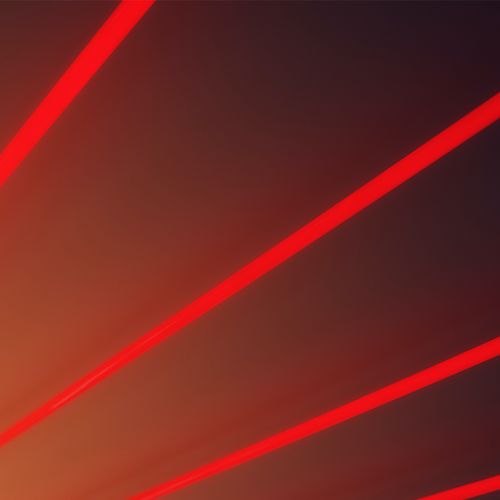How can I get rid of this belly fat?" That is the question countless patients ask when they come to my clinic. My answer to that question (as you might expect) is a healthful diet, an exercise program and some hormone balancing. But as I have observed from countless patients, losing weight in these ways is not easy. So before you schedule that tummy tuck or sign up with some gimmicky program that promises to take inches off your abdomen and waist, find out about a new alternative...
It is a low-level laser treatment (LLLT) called Zerona that is currently awaiting FDA approval for body contouring, although it has been tested and used by physicians since 2008. (There are other LLLT devices made by other companies. Zerona is the one I am most familiar with.) The procedure is performed by holistic physicians, plastic surgeons and some dermatologists.
Are you wondering why I recommend a laser therapy for fat reduction? Because aside from diet and exercise, it is one of the most noninvasive therapies for eliminating fat cells-and I believe that there's nothing wrong with using technology to help make things easier. This type of laser therapy does not involve surgery or anesthesia-and there are no wounds and no pain. I recommend it for people who are five pounds to 25 pounds overweight, who really want to lose that fat and who haven't been able to do it.
What Is A Low-Level Laser?
One of the reasons I like LLLT is that the energy output of the laser is extremely low, only about 1/1,000 as intense as the lasers used to perform other procedures, such as those to eliminate age spots and skin blemishes. Known as cold laser technology (because it isn't hot and doesn't burn the skin), Zerona involves a focused light that penetrates below the skin, stimulating receptors inside individual cells. In the case of fat cells, the laser emulsifies some of the fat that they contain, allowing it to move into the surrounding extracellular fluid. From there, the liquefied fat is absorbed into the lymph nodes and eventually released as fatty acids into the bloodstream, where it is eliminated as waste. Unlike liposuction, the cosmetic surgical procedure that removes excess fat from the body, LLLT doesn't eliminate fat cells. LLLT patients retain all the fat cells that they started with-the cells simply contain less fat. And the body uses its own detoxification process to rid itself of the contents of the fat cells.
In a study conducted by Erchonia Medical, the manufacturer of the Zerona laser, and published in the peer-reviewed journal Lasers in Surgery and Medicine, researchers found that volunteers treated for two weeks with the laser lost about 0.7 inches from each thigh...0.98 inches across the waist...and 1.05 inches across the hips. The weight loss can be long term if patients continue to maintain a healthful diet and exercise program. If they don't, of course, the weight loss is not permanent.
Thomas Barnes, MD, a cosmetic surgeon in Newport Beach, California, who uses Zerona to treat patients provided more details on how the technique works. Dr. Barnes also serves as a consultant to Santa Barbara Medical Innovators (SBMI), the company that distributes the Zerona laser.
Losing Inches Of Fat In Weeks
The Zerona device consists of five individual lasers, each mounted on a slowly revolving platform that allows the laser light to reach a relatively large surface area. During each treatment, the lasers are beamed from the waistline down to the middle of the thighs, first on the front of the body for 20 minutes and then on the back of the body for 20 minutes. Because the energy level is low, patients don't feel anything.
Although this approach is designed to reduce the fat content of areas directly exposed to the laser light, Dr. Barnes has found that the laser produces a systemic effect, draining fat from adjacent cells that aren't directly under the laser beams.
Example: A laser pointed at the torso can remove fat around the arms. For this reason, Dr. Barnes takes additional before-and after-measurements of his patients' upper arms, neck and upper abdomen. While results vary, he reports an average circumference reduction of one inch per measurement area.
Patients undergo a 40-minute session every other day for 14 days. This sequence is necessary because pores in fat cells (which are opened by the laser) begin to close after 72 hours. The treatment works best for those who want to lose areas of fat and for those who need motivation to spur on their weight-loss efforts. It is not for obese patients, who usually need to lose several inches of waist circumference.
Dr. Barnes also advises patients to drink eight glasses of water and walk for 30 to 60 minutes every day.
One of Dr. Barnes' patients, a 50-year-old woman who had been unable to lose fat in her midsection despite ongoing dieting, lost an average of 1.875 inches from her hips, waist, thighs and knees. Another patient, a woman of 35, lost an average of one inch from these areas.
SBMI reports that more than 15,000 patients have been treated with the laser over the last year. The cost for a full treatment regimen of six sessions is about $2,500. It is not covered by insurance.
Additional Health Benefits
Liposuction carries significant risk for complications (such as bruising, swelling and tissue damage), but LLLT has never been associated with any adverse effects. There also appear to be benefits associated with emptying fatty acids from the fat cells. The study published in Lasers in Surgery and Medicine found that those who had LLLT had significant reductions in total cholesterol and triglycerides.
LLLT is available around the country. To find a physician or other health-care provider in your area who offers Zerona treatments, visit www.findzerona.com.
